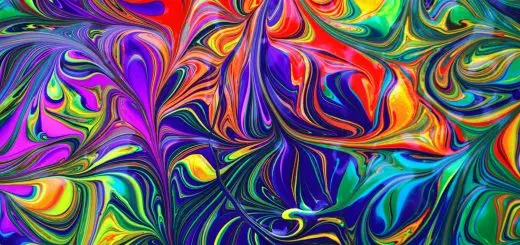Yellow Emperor: Legendary Ancestor of the Chinese

Looking for more amazing products? Check out our online store and explore our collection here! Happy shopping!
Before diving in, please note: This post is for informational purposes only. If you’d like to know more about how we approach topics, feel free to check out our friendly Disclaimer Page.
Hey there, amazing readers! 
We’re committed to delivering quality posts, and your support (even just sticking around despite the ads) means everything to us. So, bear with us, and thanks for helping us keep the good vibes rolling. Now, on to the fun stuff!
TRANSLATE BUTTON AT THE END OF THE ARTICLE
Overview: Yellow Emperor in Chinese mythology
The Yellow Emperor, also known as Huangdi, holds a significant place in Chinese mythology and history.
He is considered a legendary figure and the ancestor of the Chinese people.
According to ancient Chinese texts, the Yellow Emperor was a wise and benevolent ruler who lived during the 27th century BCE.
His reign is said to have laid the foundations for Chinese culture, civilization, and medicine.
This article explores the origins of the Yellow Emperor legend, his historical significance, legendary accomplishments, contributions to Chinese culture, worship and reverence, influence on Chinese medicine, role in the development of acupuncture, symbol of Chinese nationalism, portrayal in art, literature, and popular culture, controversies surrounding him, and his legacy in modern-day China.
Origins of the Yellow Emperor legend
The origins of the Yellow Emperor legend can be traced back to ancient Chinese mythology.
According to mythological accounts, the Yellow Emperor was born to a noble family in the region of Central China.
As a young man, he embarked on a quest for knowledge and enlightenment.
He is said to have studied under the guidance of several wise sages and gained immense wisdom and understanding of the world.
Eventually, he ascended to the throne and became the ruler of the land, ushering in a golden age for the Chinese people.
While the exact historical accuracy of these accounts is debated, the legend of the Yellow Emperor has played a crucial role in shaping Chinese identity and culture.
Historical significance of the Yellow Emperor
Despite the legendary nature of the Yellow Emperor, he holds immense historical significance in Chinese history.
The era believed to be his reign, known as the Xia Dynasty, marks a crucial transition period in ancient China.
It is often seen as the beginning of Chinese civilization and the establishment of a centralized government.
The Yellow Emperor is credited with introducing various important cultural and technological advancements, such as the development of agriculture, writing systems, and the calendar.
His reign is considered a pivotal moment in Chinese history, serving as a foundation for the subsequent dynasties and the formation of Chinese identity.
Legendary accomplishments of the Yellow Emperor
The Yellow Emperor is associated with numerous legendary accomplishments that have left a lasting impact on Chinese culture and history.
He is said to have defeated mythical beasts, established a code of laws, and promoted harmony and peace among his subjects.
The Yellow Emperor is also credited with inventing various tools and technologies, including the compass, silk production, and the Chinese zither.
His wisdom and military prowess are revered, and his conquests are regarded as heroic feats.
Though the historical accuracy of these accomplishments is debated, they continue to be celebrated in Chinese folklore, art, and literature.
Contributions to Chinese culture and civilization
The Yellow Emperor made significant contributions to Chinese culture and civilization, shaping the foundation of Chinese society.
He introduced the concept of the Five Elements, which became fundamental in traditional Chinese philosophy, medicine, and astrology.
His teachings on ethics and morality influenced Confucianism, an important school of thought in China.
Additionally, the Yellow Emperor is believed to have established the first system of writing, laying the groundwork for the development of Chinese calligraphy and literature.
His reign is considered a golden age of cultural and intellectual flourishing, leaving a lasting impact on Chinese tradition and identity.
Worship and reverence of the Yellow Emperor
The Yellow Emperor is widely revered and worshipped in China.
He is considered the ancestor of the Chinese people and is regarded as a deity.
Worship ceremonies and festivals, such as the Huangdi’s Birthday on April 3rd of the lunar calendar, are held in his honor.
Many temples and shrines dedicated to the Yellow Emperor can be found across China, attracting pilgrims and worshippers who seek blessings and guidance.
Explore the Path to Spirituality and Enlightenment – Start Here.
The reverence for the Yellow Emperor is deeply rooted in Chinese culture and serves as a symbol of unity and national identity.
Influence of the Yellow Emperor on Chinese medicine
The Yellow Emperor’s influence on Chinese medicine is profound.
Huangdi Neijing, also known as the Yellow Emperor’s Inner Canon, is a foundational text in traditional Chinese medicine (TCM).
It is believed to have been written by the Yellow Emperor and his court physicians.
The text provides essential knowledge on acupuncture, herbal medicine, and the balance of Yin and Yang, forming the basis of TCM theory and practice.
The Yellow Emperor’s emphasis on preventive medicine and holistic approaches to health has had a lasting impact on the development and practice of Chinese medicine.
The Yellow Emperor’s role in the development of acupuncture
Acupuncture, one of the key components of TCM, owes its development to the Yellow Emperor.
Legend has it that the Yellow Emperor’s court physician, Qi Bo, introduced and refined the practice of acupuncture under the guidance of the emperor.
Acupuncture involves the insertion of thin needles into specific points on the body to stimulate and balance the flow of Qi, or vital energy.
The Yellow Emperor’s contributions to acupuncture are enshrined in the Neijing, which documents the meridians, acupuncture points, and techniques used in this ancient healing modality.
Today, acupuncture is practiced and recognized globally for its effectiveness in treating various ailments.
Yellow Emperor as a symbol of Chinese nationalism
The Yellow Emperor holds a significant place in Chinese nationalism.
He is often regarded as the embodiment of the Chinese nation and its values.
Chinese nationalists have historically invoked the spirit and legacy of the Yellow Emperor to foster a sense of unity, pride, and patriotism.
The Yellow Emperor’s mythical achievements and wisdom are seen as evidence of Chinese exceptionalism and superiority.
His historical importance and symbolic role in Chinese nationalism continue to resonate with the Chinese people, especially during times of political and social change.
The Yellow Emperor in art, literature, and popular culture
The Yellow Emperor has been a prominent figure in Chinese art, literature, and popular culture for centuries.
Numerous artworks, such as paintings, sculptures, and murals, depict the Yellow Emperor and his legendary feats.
He is a recurring character in classical Chinese literature, often portrayed as a wise ruler and military strategist.
In modern times, the Yellow Emperor has been featured in films, television series, and video games, further cementing his status as a cultural icon.
His image and legacy continue to inspire and captivate audiences, both in China and around the world.
Controversies and debates surrounding the Yellow Emperor
Despite the significant role of the Yellow Emperor in Chinese mythology and history, there are controversies and debates surrounding his existence and the accuracy of the accounts attributed to him.
Some scholars argue that the Yellow Emperor is a fictional character created to legitimize certain political ideologies or to unify diverse Chinese tribes.
Others believe that the legend of the Yellow Emperor originated from multiple historical figures who were later merged into a single mythological figure.
The lack of concrete historical evidence and the mythical nature of the Yellow Emperor have led to ongoing discussions and academic disputes.
Legacy of the Yellow Emperor in modern-day China
The legacy of the Yellow Emperor continues to influence modern-day China.
The reverence for the Yellow Emperor is upheld through the celebration of festivals, the worship at temples, and the preservation of cultural traditions.
The Yellow Emperor’s contributions to Chinese medicine are still relevant today, shaping the practice of TCM and acupuncture worldwide.
His mythical accomplishments and wisdom serve as a source of inspiration and pride for the Chinese people, reinforcing their cultural identity and national unity.
The Yellow Emperor’s legacy is a testament to the enduring power of myth and its ability to shape beliefs, values, and historical narratives.
Conclusion
The Yellow Emperor, a legendary ancestor of the Chinese people, holds a significant place in Chinese mythology and history.
While the historical accuracy of his existence and accomplishments is debated, the legend of the Yellow Emperor has played a crucial role in shaping Chinese identity, culture, and medicine.
His reign is considered a pivotal moment in Chinese history, marking the beginning of Chinese civilization and the establishment of a centralized government.
The Yellow Emperor’s contributions to Chinese culture, his role in the development of Chinese medicine, and his symbolic significance in Chinese nationalism have left a lasting impact on Chinese society.
The reverence for the Yellow Emperor and his mythical legacy continue to resonate with the Chinese people, reinforcing their cultural identity and national unity.

The Enlightenment Journey is a remarkable collection of writings authored by a distinguished group of experts in the fields of spirituality, new age, and esoteric knowledge.
This anthology features a diverse assembly of well-experienced authors who bring their profound insights and credible perspectives to the forefront.
Each contributor possesses a wealth of knowledge and wisdom, making them authorities in their respective domains.
Together, they offer readers a transformative journey into the realms of spiritual growth, self-discovery, and esoteric enlightenment.
The Enlightenment Journey is a testament to the collective expertise of these luminaries, providing readers with a rich tapestry of ideas and information to illuminate their spiritual path.
Our Diverse Expertise
While our primary focus is on spirituality and esotericism, we are equally passionate about exploring a wide range of other topics and niches 

To ensure we provide the most accurate and valuable insights, we collaborate with trusted experts in their respective domains 
Our blog originally focused on spirituality and metaphysics, but we’ve since expanded to cover a wide range of niches. Don’t worry—we continue to publish a lot of articles on spirituality! Frequently visit our blog to explore our diverse content and stay tuned for more insightful reads.
Hey there, amazing reader! 
Check out our store here and take a peek at some of our featured products below! Thanks for being awesome!















